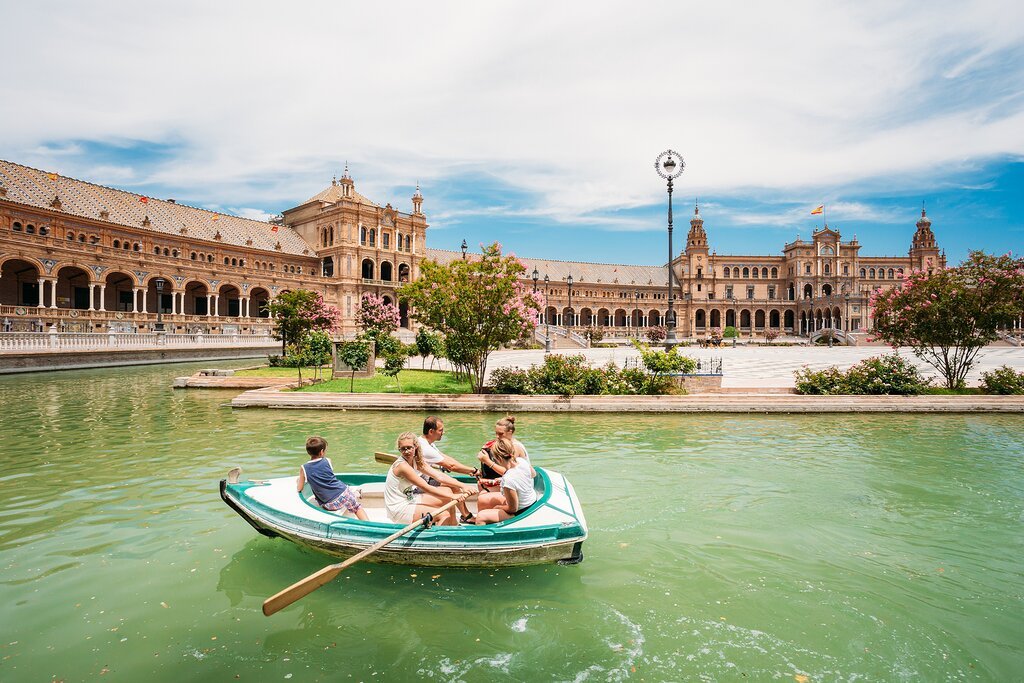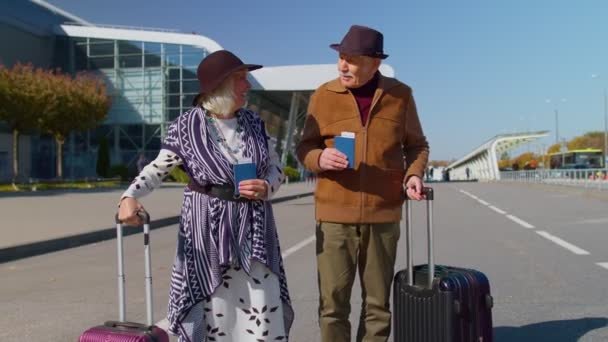Family Reunification Visa
The family reunification visa is the immigration procedure through which a non-European citizen with a residence permit in Spain can bring their relatives to the country; granting them a residence and work permit.
It is important to keep in mind that only those foreigners in Spain who have renewed their initial residence authorization are eligible to begin this process.
That is, if you have been legally in Spain for less than a year, you still cannot regroup your family members. You must have a renewed residence permit.
In addition, and as a general rule, you need to demonstrate that the relative you want to bring to Spain depends economically on you. Later on this article, we will see how this is done exactly.

Let us answer one of the most frequent questions any foreigner. may have Can I bring my whole family to the country? The answer is simple: no.
You can only regroup your parents or parents-in-law (ascendants), bring your children or the children of your partner (descendants), and your spouse or common-law partner.
You can only regroup your parents or parents-in-law (ascendants), bring your children or the children of your partner (descendants), and your spouse or common-law partner.
But how to do it?
The general procedure to regroup relatives is always the same.
The only difference lies in the specific requirements or documents that are requested according to the family member we wish to regroup.
So let’s explore all the different possible cases, one by one.
Here you can find a complete guide with the 5 ways to bring your parents to Spain.
It is very important to keep in mind that we can only regroup children under 18. Just in the case of the family reunification under the Community regime will it be possible to regroup children over 18 years of age. But only until 21.
In the latter case (regrouping of children between 18 and 21 years old), it will be essential to demonstrate that they are studying (with a university certificate) and that they are economically dependent on you (father or mother). It is not possible to bring them if they have a job contract.

The 21-year limit may be exceeded only in cases where the child has a demonstrable and sufficient disability so as to need her parents to be in charge of him or her. In addition, it is also not possible to regroup grandchildren.
How do we demonstrate that they really are our children? This will be the only additional requirement to meet for regrouping a child. We must provide the birth certificate at the immigration office.
Finally, and to demonstrate the required economic dependence, you must show how money transfers have been realized during the past years.

Article 53.b. of the Immigration Law allows you to regroup both your spouse (husband or wife) and any person with whom you have a similar relationship bond. That is, it is also possible to regroup your de civil partner or concubine (“pareja de hecho”).
In addition, the civil couple or spouse can be regrouped whether she is from a different sex or of the same sex.
The most important thing to keep in mind to bring your partner or husband/wife is to present the marriage certificate or civil partnership registration. This is the document that testifies the affective bond.
It will be very important that neither member is already married to a third person. In addition, demonstrating that it is not a convenience couple is also crucial. To do this, it is possible to use a joint registration certificate (“empadronamiento”) or rental agreement in which both partners are registered.
You can only regroup your parents or parents-in-law (ascendants), bring your children or the children of your partner (descendants), and your spouse or common-law partner.
You can only regroup your parents or parents-in-law (ascendants), bring your children or the children of your partner (descendants), and your spouse or common-law partner.
But how to do it?
The general procedure to regroup relatives is always the same. The only difference lies in the specific requirements or documents that are requested according to the family member we wish to regroup.
So let’s explore all the different possible cases, one by one.
Regrouping parents or in-laws can become one of the most complex procedures. That is because the requirements to be met are quite strict.
The ascendants to be regrouped (parents or in-laws), must be over 65 years of age, you as a regrouper must be in charge of them, and there must be sufficient reason to regroup them (for example the need for intensive care due to their advanced age).
Again, to demonstrate economic dependence, it will be necessary to demonstrate that during the past months the regrouper has transferred money to the regrouped or has been in charge of his or her significant expenses.
But the regrouper must also meet certain requirements to be able to regroup his parents.

In this case it is required that you have a long-term or long-term EU card. That is, you must have resided a minimum of 5 years in Spain in order to bring your parents with you.
And which are the required documents? At the time of the application, you must provide your birth certificate to prove that they are indeed your parents.
Or, alternatively, if the in-laws are the ones being regrouped, the marriage certificate with your spouse and your couple’s birth certificate.
In the latter case (regrouping of children between 18 and 21 years old), it will be essential to demonstrate that they are studying (with a university certificate) and that they are economically dependent on you (father or mother). It is not possible to bring them if they have a job contract.
The 21-year limit may be exceeded only in cases where the child has a demonstrable and sufficient disability so as to need her parents to be in charge of him or her.
In addition, it is also not possible to regroup grandchildren.
How do we demonstrate that they really are our children? This will be the only additional requirement to meet for regrouping a child. We must provide the birth certificate at the immigration office.
Finally, and to demonstrate the required economic dependence, you must show how money transfers have been realized during the past years.

It is not possible to bring your brother or sister to Spain. Or at least not through the family reunification process.
In order to bring your brother or sister to the Spanish territory, you must complete the process of family reunification under the Community Regime by extended family.
This procedure allows you to regroup family members other than those we have already seen (first-degree ascendants and descendants and direct, spouse or common-law partner): nephews, grandchildren, grandparents, and siblings.
As we have mentioned, the family reunification visa is a procedure initiated by a non-European citizen to bring another non-European citizen to Spain.
But what happens if the expat in Spain is European? In that case, the so-called European/Community family reunification will be carried out.
But we must be careful here.
Why? Because there is no such thing as community regrouping. That is the name that the permit as a family member of an EU citizen wrongly receives Thus, the applicable law is not the General Foreigners Law, but the Community regime.
The visa as a family member has certain differences in regards to the family reunification, so we recommend that you discover them in this other article.


Let’s now discover which are the general documents and requirements you must submit for your application. Remember that this upcoming list goes hand in hand with the specific documents that each relative requires (which we have already seen above).
For this, we recommend you to visit our post in which we detail the main requirements for family reunification. But here we will give you a general overview:
- Criminal records certificate in case the relative you bring to the country is over 18 years old.
- Passport and residence card of the person who regroups; and the regrouped passport.
- Adequate housing report, demonstrating that your house is suitable and meets the minimum conditions so that your relative can live in a dignified way.
- Demonstrate the possession of sufficient financial means to be economically in charge of your family member when she comes to Spain.
- Private medical insurance or proof of subscription to the Spanish social security system. You can access a complete guide with all the relevant info about medical insurance contracts here.
Bear in mind that it is not necessary to provide the original documents initially. Those will be only requested at the time of obtaining the visa (at the consulate in the country of origin of the regrouped). In spain, a copy will be enough.
As we have mentioned, the family reunification visa is a procedure initiated by a non-European citizen to bring another non-European citizen to Spain.
But what happens if the expat in Spain is European? In that case, the so-called European/Community family reunification will be carried out.
But we must be careful here.
Why? Because there is no such thing as community regrouping. That is the name that the permit as a family member of an EU citizen wrongly receives Thus, the applicable law is not the General Foreigners Law, but the Community regime.
The visa as a family member has certain differences in regards to the family reunification, so we recommend that you discover them in this other article.


The procedure to get the family reunification visa generally takes about 6 months from beginning to end. However, the total time will depend on many factors such as how long does it takes for the immigration office to give you an appointment or how long it takes for the consulate to respond to the visa application.
Thus, it will be very useful for us to understand the procedure step by step so you can define exactly how long it will take for you.
The first thing you should do (as the relative who is already in Sapin) is to get an appointment at the immigration office and start the legal application. To do this you must fill out and submit the EX-02 model with all the other documentation that we have mentioned in this article.
The immigration office will have 3 months to give you an answer, considering the request denied in case of administrative silence after that time. More on administrative silence (“silencio administrativo”) for your immigration application here.
Once you receive a positive response, the relative who is abroad but wants to come to Spain must apply for a visa at the Spanish consulate located in the country of origin.
After 2 months of waiting (maximum), the regrouped will receive the visa and can enter Spain in a maximum period of 3 months. Once in Spain she will have 1 month to apply for your residence card or TIE.
Remember that all foreign documents must be translated into Spanish and duly legalized or apostilled.
If you need one of our lawyers to answer all your questions or accompany you step by step throughout the process, do not hesitate to contact us.
